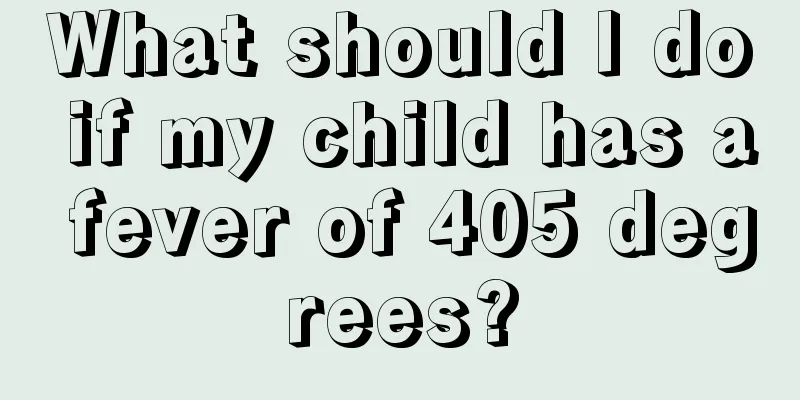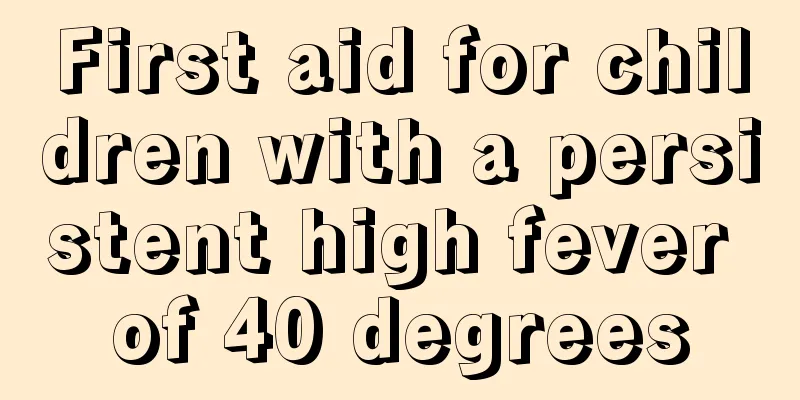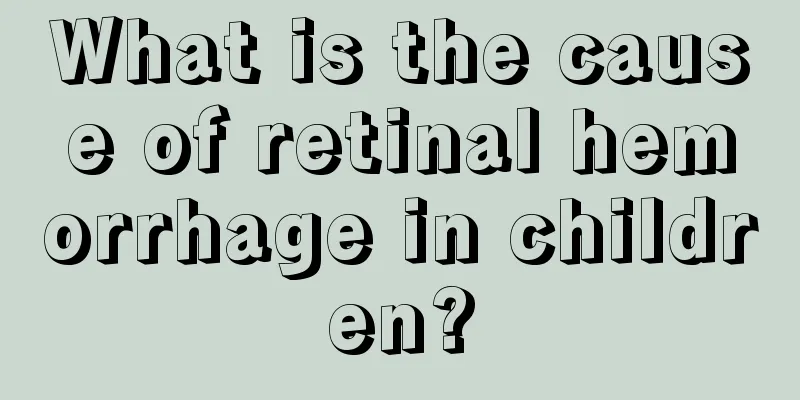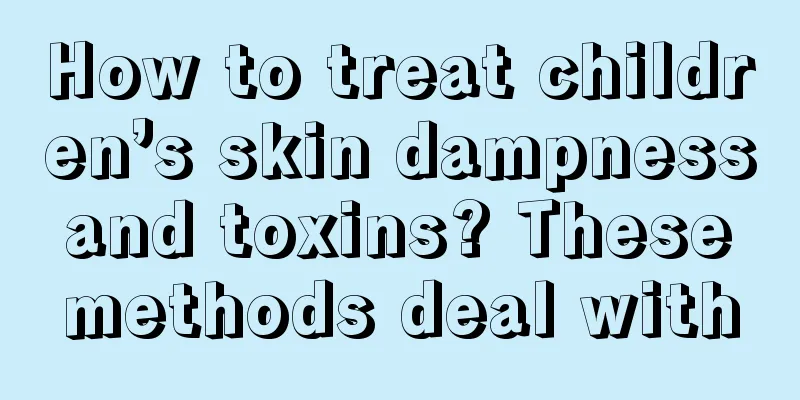What should I do if my child has a fever of 405 degrees?

|
Children in their early childhood have relatively poor resistance and are prone to developing diseases due to some factors in their lives. It is very common for children to have a fever. Some children's fever is more serious and can reach around 40 degrees. Most parents don't know how to deal with this situation when their children have this problem. So, what should we do if our child has a fever of 405 degrees? First, what should we do if a child has a fever of 40-5 degrees? Although children are more resistant to fever, if the fever is above 40 degrees, they should go to the hospital immediately for fever reduction treatment, otherwise it is likely to cause brain tissue damage, fainting, and other serious consequences. If the condition is not serious after testing, but just a simple inflammation or cold, there is no need for a large amount of infusion. After all, infusion is harmful to the body. Try to treat it with oral medication! While recuperating at home, if the child starts to have a fever again, you can use physical cooling methods such as wiping the body and forehead with a wet towel to make the child more comfortable. If the fever rises above 40 degrees again, you still have to go to the hospital for treatment, don't be bothered by it. Second, fever is the body's immune mechanism and a preventive measure against disease. Pneumonia, encephalitis, viral influenza, scarlet fever, gastroenteritis, measles and many other diseases can cause fever. Therefore, it is correct to go to the hospital for blood tests to confirm the cause of the disease. It is best not to guess at the medication yourself. Generally speaking, repeated high fevers above 40 degrees rarely occur. If it does happen, do not let your child endure it at home, take him to a small clinic, or take antipyretics on your own. Getting more sleep and ensuring adequate sleep can help you recover from the illness.Antipyretics, such as Tylenol and Anesthesia drops, should only be used after the body temperature reaches 39 degrees. However, when infants and young children under 3 years old have a high fever, physical cooling methods should be used first. Generally, antipyretic injections and antipyretic drugs are not required to avoid collapse and drug toxicity reactions. Other drugs should also be used with caution. Regardless of whether the fever has subsided, parents should take their children to find out the cause of the fever as much as possible. It is unscientific to force the temperature down. You may try the above points. I wish your baby health and happiness! What should you do if your child has a fever of 405 degrees? Generally speaking, if the baby's fever is below 38.5℃, there is no need for antipyretic treatment, and physical cooling should be used; if the fever is above 38.5℃, appropriate drug antipyretic measures should be used.Physical cooling: Warm water bath, dip a towel in warm water (the water temperature should not be too hot to touch) and wipe the neck, armpits, and thighs for 5 to 10 minutes. You can also use a commercially available "cooling patch" (or a household ice pack) on the forehead to help dissipate heat and reduce temperature. Drug-induced fever reduction: When the above measures are not effective, oral antipyretics can be taken. 2. Drink more water and eat liquid food, such as watermelon juice, to ensure that the body has sufficient energy and water. 3. Ventilate more, pay attention to heat dissipation, wear loose clothes, and avoid wrapping yourself with a quilt. You can use air conditioning in the summer and control the room temperature at around 27℃. Remember to open windows regularly to allow air convection in the room. |
<<: Is a child's fever of 376 degrees considered a fever? What should I do?
>>: Is a child's fever of 394 degrees serious?
Recommend
Why does my baby have ringworm on his chin?
Babies are prone to drooling before they are one ...
What to do if infants and young children have yellow hair
Chinese people's hair is generally black, and...
10 Mistakes When Giving Medicine to Your Baby
We often say that "medicine is three parts p...
What to do if babies and young children have skin allergies
Some infants and young children have skin problem...
There are three reasons for swollen lymph nodes behind the ears in children!
Swollen lymph nodes behind the ears are a common ...
How effective is pediatric massage in removing phlegm?
In the cold winter, babies are prone to symptoms ...
What to do if a five-year-old child has stomach pain
If a child has stomachaches all the time when he ...
What are the symptoms of cerebral hemorrhage in children?
Cerebral hemorrhage in children is a relatively s...
What to do if your child has indigestion after eating too much
Children have poor self-control and often they wi...
How to care for your baby with a low-grade fever
Every parent hopes that their baby is healthy and...
What is the solution for a baby who hasn't pooped for two days?
Parents are very concerned about their children&#...
Eye twitching
In everyone's impression, children are partic...
How to prevent allergic urticaria
Although urticaria is a common skin disease, it i...
Comprehensive care for premature infants at 36 weeks
Premature babies at 36 weeks are a common phenome...
What is the best way to treat children's indigestion?
It is quite common for children to have indigesti...









